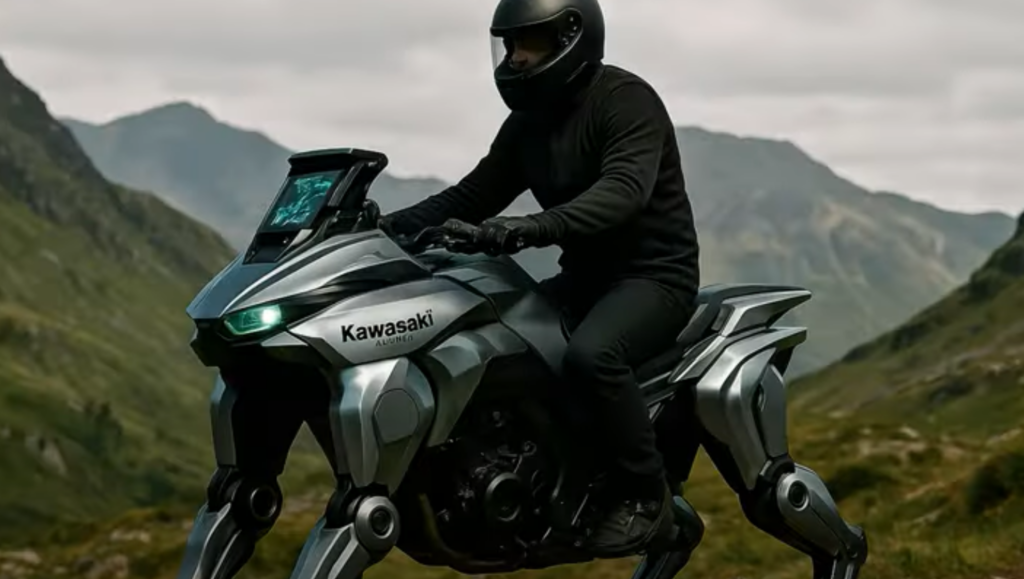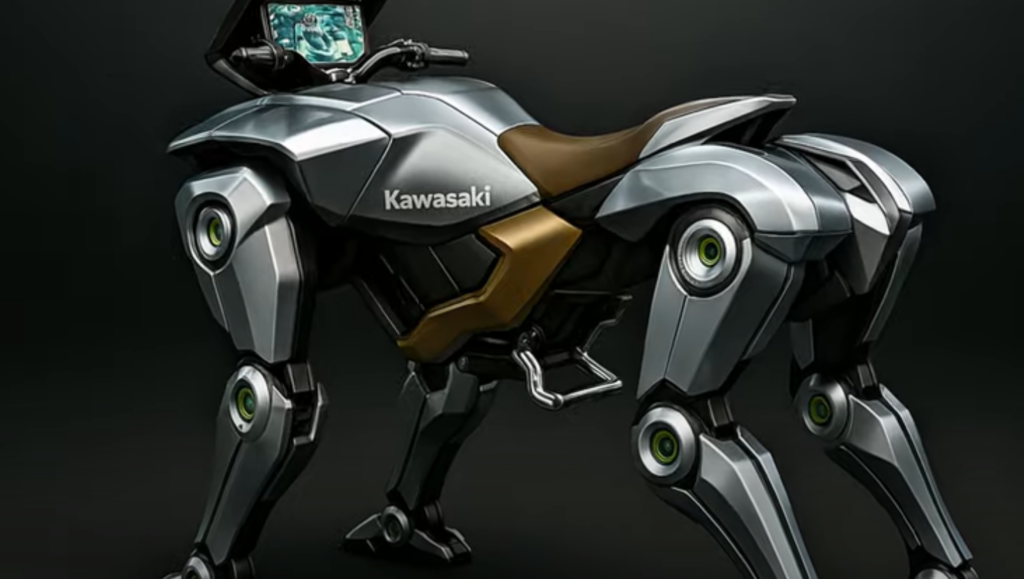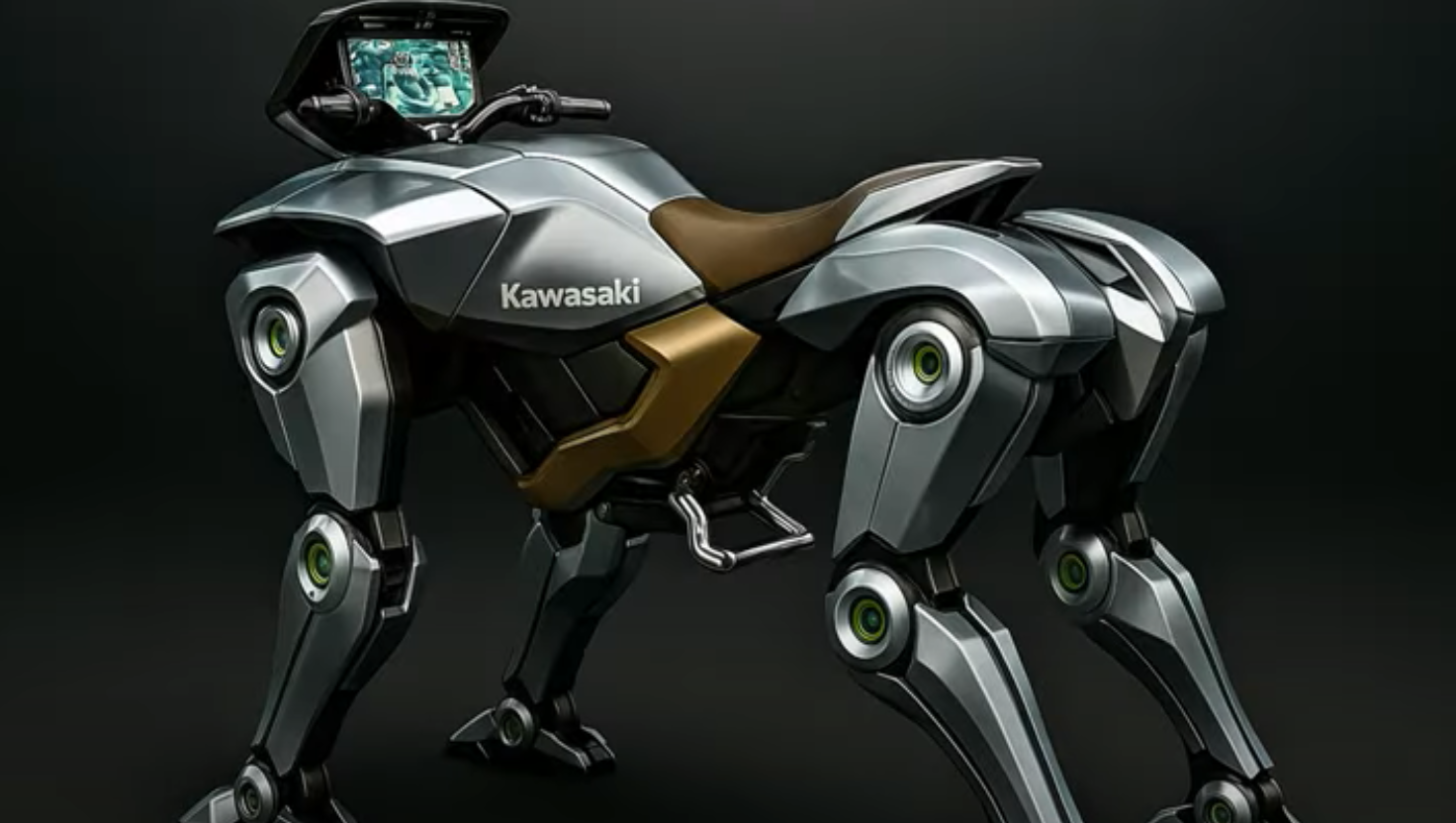Introduction
Table of Contents
Imagine a vehicle that combines the thrill of riding a motorcycle with the agility of a four-legged animal, all powered by clean energy. That’s what Kawasaki Heavy Industries has brought to life with the Corleo robot, a groundbreaking concept revealed at the Osaka-Kansai Expo 2025. This hydrogen-powered, rideable robotic horse is designed to take you places no car or bike can go—think rugged mountains, muddy trails, and rocky paths. In this article, we’ll dive into everything you need to know about the Kawasaki Corleo robot, from its unique design to its eco-friendly power source and potential to change how we explore the outdoors. Let’s saddle up and explore this exciting innovation!
What Is the Kawasaki Corleo Robot?
The Kawasaki Corleo is a four-legged robotic vehicle you can ride like a horse. Unveiled on April 5, 2025, at the Osaka-Kansai Expo, it’s a concept that blends Kawasaki’s expertise in motorcycles and robotics into something new. Unlike traditional off-road vehicles with wheels, Corleo walks on four independent legs, allowing it to move smoothly over rugged terrain. It’s powered by a hydrogen engine, making it a clean-energy machine that doesn’t harm the environment. Think of it as a futuristic steed for adventurers who want to explore nature without leaving a big footprint.
This robot isn’t just a wild idea—it’s a peek into the future of personal transportation. Kawasaki calls it an “off-road personal mobility platform” designed for people who love the outdoors. Whether climbing a hill or crossing a stream, Corleo aims to get you there with stability and style. It’s still a concept, not something you can buy yet, but it’s already sparking excitement about what’s possible.
How Does the Corleo Robot Work?
So, how does this robotic horse move? The secret lies in its four legs, each powered separately to adapt to the ground beneath it. These legs have rubber “hooves” that grip surfaces, from dirt to rocks. The legs move independently, so if one steps on a bump, the others adjust to keep you balanced. It’s like how a real horse walks, but with high-tech precision.
Instead of buttons or a steering wheel, you control Corleo by shifting your body weight. Lean forward to go, tilt back to slow down—it’s that simple. Sensors in the foot pegs and handlebars pick up your movements and tell the robot what to do. A display screen also shows you things like hydrogen levels and how steady your ride is. At night, built-in lights help you see where you’re going. It’s a mix of innovative technology and natural riding instincts.
The Power Behind Corleo: Hydrogen Energy
One of the most incredible things about the Kawasaki Corleo is its engine. It runs on a 150cc hydrogen motor, which creates electricity to move the legs. Hydrogen is a clean fuel—when used, the only byproduct is water, not pollution. It makes Corleo a green choice for off-road fun, perfect for people who care about the planet.
Kawasaki has been working on hydrogen power for a while, and Corleo shows how it could fit into everyday life. The hydrogen is stored in a cartridge at the back of the robot, giving it enough juice for extended adventures. While Kawasaki hasn’t shared exact details like how far it can go on one tank, the idea is to make outdoor exploration sustainable. It’s a big step toward a future where machines don’t hurt the air we breathe.

A Design Inspired by Motorcycles
Looking at Corleo, you’ll see hints of Kawasaki’s famous motorcycles. The body is sleek and strong, made from lightweight metal and carbon materials. At the front, a shield looks like a motorcycle’s face, with lights for riding in the dark. The design isn’t just for looks—it helps Corleo cut through the wind and stay tough on rough trails.
The robot’s shape also makes it comfy to ride. You sit on it like a horse, with adjustable stirrups for your feet. The legs are built to soak up bumps so you don’t feel every jolt. It’s a brilliant mix of motorcycle style and animal-like movement, giving you a ride that feels familiar and new.
Why Four Legs Make a Difference
Why give a robot four legs instead of wheels? The answer is all about where it can go. Wheels are great on flat roads, but they struggle on uneven ground. Corleo’s legs let it step over rocks, climb slopes, and even jump small obstacles. Each leg moves independently, so the robot stays steady no matter what’s underfoot.
It makes Corleo perfect for places like forests, mountains, or beaches—spots where cars and bikes can’t easily reach. It’s not just about getting around; it’s about enjoying the journey. Kawasaki wants riders to feel free and connected to nature, and those four legs make it happen.
Corleo’s Smart Features: AI and More
The Kawasaki Corleo isn’t just a walking machine—it’s also brilliant. It uses artificial intelligence (AI) to determine the terrain and adjust its steps. The AI helps keep you from tipping over if you’re on a steep hill. It also learns how you ride and tweak itself to match your style. It makes every trip smoother and safer.
The robot’s display adds another layer of smarts. It shows real-time information, like how much hydrogen is left and where your weight is centred. It can also project markers onto the ground at night to guide your path. These features make Corleo feel like a partner, not just a tool.
Who Is the Corleo Robot For?
Who would want to ride a robotic horse? Adventure lovers are people who hike, camp, or explore off the beaten path. Corleo could take them deeper into nature than ever before. It’s also for tech fans who get excited about new gadgets. Even the military might be interested, as some have pointed out on social media, for its ability to reach tough spots.
You don’t need to be an expert to ride it, either. Kawasaki designed Corleo to be easy for anyone, with no special skills required. Whether you’re a weekend warrior or just curious, this robot could be your ticket to a wild ride.
When Can You Ride the Corleo?
Here’s the catch: you can’t hop on a Corleo yet. It’s a concept, not a finished product. Kawasaki showed it off at the Osaka-Kansai Expo, which runs from April 13 to October 13, 2025, to give us a taste of what’s coming. They aim for a possible release around 2050, so it’s a long-term vision.
That timeline makes sense when you consider the technology involved. Building a robot this advanced takes years of testing and tweaking. For now, Corleo is a promise—a look at how we might move around in the future. It’s something to dream about while Kawasaki works out the details.

The Future of Mobility with Kawasaki
Corleo isn’t just a cool toy; it’s part of a bigger plan. Kawasaki has been making robots and motorcycles for decades, and now they’re mixing those skills to rethink transportation. They see a world where machines run on clean energy and go places we’ve never been. Corleo is a step toward that goal.
This robot also fits into a global push for sustainability. With climate change on everyone’s mind, hydrogen power could be a game-changer. Kawasaki’s betting that people want adventure without guilt, and Corleo might be the answer.
Challenges Ahead for Corleo
Of course, turning a concept into reality isn’t easy. The Corleo prototype can’t do everything the fancy videos show—like running or jumping. It’s more of a standing model, a starting point. Engineers must solve big problems, making them fast, strong, and affordable.
There’s also the question of cost. High-tech robots aren’t cheap, and hydrogen fuel isn’t as standard as gas. Kawasaki has a lot of work to do before Corleo hits the trails. But if anyone can pull it off, it’s a company with a track record.
Why Corleo Matters
So why should you care about a decades-old robot horse? It’s a sign of what’s possible. Corleo shows how technology can bring us closer to nature, not push us away. It’s about freedom, fun, and caring for the planet wrapped in a wild package.
Even if Corleo never makes it to market, the ideas behind it could shape other machines. This project may allow us to see hydrogen-powered bikes or more innovative robots. It’s a spark that could light up the future.
Conclusion
The Kawasaki Corleo robot is more than just a cool idea—it’s a glimpse into a world where adventure and innovation go hand in hand. With its four-legged design, hydrogen power, and innovative features, it promises to take riders where no vehicle has gone before. While it’s still a concept with a 2050 target, it inspires people to think differently about getting around. Whether you’re an outdoor enthusiast or a tech lover, Corleo is something to watch. The future of off-road mobility might have hooves instead of wheels!
Frequently Asked Questions (FAQs)
1. What is the Kawasaki Corleo robot?
The Kawasaki Corleo is a four-legged, hydrogen-powered robotic vehicle you can ride, designed for off-road adventures. It combines motorcycle style with robotics to tackle challenging terrain.
2. How does the Corleo move?
It walks on four independent legs with rubber hooves, controlled by your body weight. The legs adjust to keep you steady on uneven ground.
3. When will the Corleo be available?
It’s a concept right now, with a possible release around 2050. Kawasaki showed it at the Osaka-Kansai Expo in 2025 as a future vision.
4. Why does Corleo use hydrogen power?
Hydrogen is a clean fuel that only produces water, not pollution. It makes Corleo eco-friendly for outdoor use.
5. Who can ride the Corleo robot?
It’s designed for adventurers, tech fans, or even beginners. No special skills are needed to hop on and go.
References
- Kawasaki Heavy Industries. (2025). “CONCEPT1 | Kawasaki.” Retrieved from www.khi.co.jp.
- Greek Reporter. (2025). “Kawasaki Reveals Four-Legged Robot You Can Ride Like a Horse.” Retrieved from greekreporter.com.
- Robots Wiki. (2025). “Is the Kawasaki Corleo Real? Separating Fact from Fiction.” Retrieved from robots.wiki.
- Robotics and Automation News. (2025). “Kawasaki Unveils Hydrogen-Powered Robotic Horse.” Retrieved from roboticsandautomationnews.com.
